Hnojení rajčat a paprik: Podrobný průvodce pro maximální úrodu vašich oblíbených plodů
Pěstování lahodných a šťavnatých rajčat a křupavých paprik je snem každého zahradníka. Klíčem k dosažení bohaté úrody a zdravých rostlin je kromě správné zálivky, slunečního svitu a kvalitní půdy také pravidelné a vyvážené hnojení. V tomto obsáhlém průvodci se ponoříme do všech aspektů hnojení rajčat a paprik, abyste se stali mistry ve svém oboru a vaše zahrada se mohla pyšnit prvotřídními plody.
Proč je hnojení rajčat a paprik tak důležité?
Rajčata a papriky jsou plodiny s vysokými nároky na živiny. Během svého růstu a vývoje spotřebovávají značné množství makroprvků (dusík, fosfor, draslík) a mikroprvků (železo, hořčík, vápník, zinek a další). Půda sama o sobě často nedokáže tyto živiny v dostatečném množství poskytnout, zvláště pokud na stejném záhoně pěstujete plodiny opakovaně. Pravidelné hnojení zajišťuje, že rostliny mají k dispozici všechny potřebné živiny pro:
- Silný a zdravý růst kořenového systému a nadzemní části.
- Bohaté kvetení a násadu plodů.
- Správný vývoj a dozrávání plodů.
- Zvýšení odolnosti vůči chorobám a škůdcům.
- Vyšší kvalitu a chuť plodů.
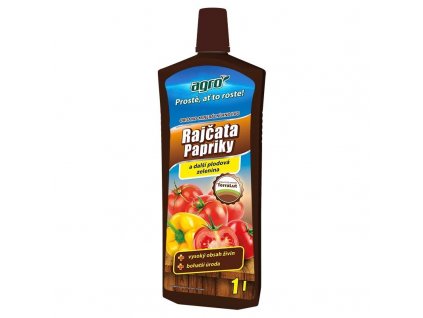
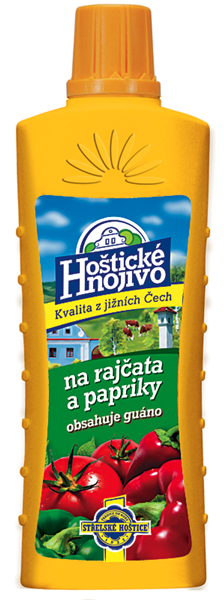
Kdy začít s hnojením rajčat a paprik?
S hnojením je vhodné začít již při přípravě půdy před výsadbou. Zapracování kvalitního kompostu nebo dobře vyzrálého hnoje do půdy dodá rostlinám základní živiny a zlepší její strukturu. Další hnojení následuje:
Před výsadbou sazenic:
Pokud jste nepoužili kompost nebo hnůj, můžete do výsadbové jamky přidat pomalu rozpustné hnojivo nebo menší dávku granulovaného minerálního hnojiva s vyváženým poměrem NPK (dusík, fosfor, draslík).
Po zakořenění sazenic:
Přibližně 2-3 týdny po výsadbě, kdy se sazenice dobře ujmou, můžete začít s pravidelným přihnojováním. V této fázi rostliny potřebují především dusík pro podporu růstu listů a stonků.
V období kvetení:
S nástupem kvetení se zvyšuje potřeba fosforu, který podporuje tvorbu květů a následně plodů. V této fázi je vhodné použít hnojivo s vyšším obsahem fosforu.
V období tvorby a zrání plodů:

Během tvorby a zrání plodů rostliny potřebují dostatek draslíku, který ovlivňuje velikost, barvu, chuť a skladovatelnost plodů. Dále je důležitý i vápník pro prevenci hniloby konců plodů.
Jaká hnojiva jsou vhodná pro rajčata a papriky?
Na trhu existuje široká škála hnojiv vhodných pro rajčata a papriky. Můžeme je rozdělit do dvou hlavních kategorií:
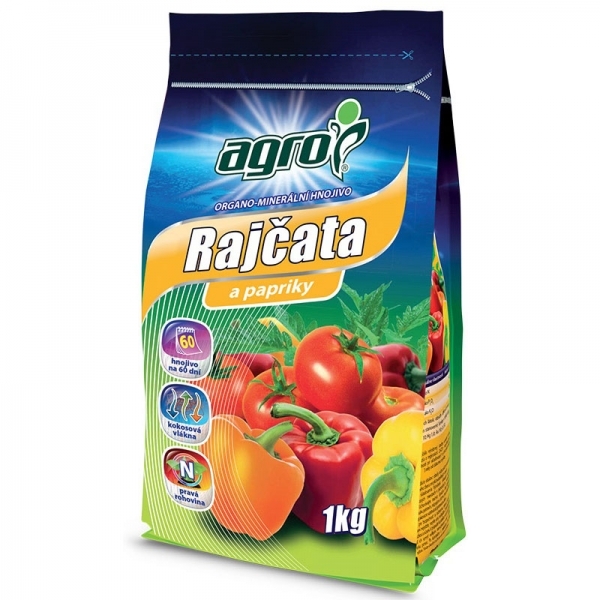
Organická hnojiva:
Organická hnojiva jsou přírodního původu a mají mnoho výhod. Postupně uvolňují živiny, zlepšují strukturu půdy, podporují činnost půdních mikroorganismů a jsou šetrná k životnímu prostředí. Mezi oblíbená organická hnojiva patří:
- Kompost: Univerzální organické hnojivo bohaté na živiny a humus.
- Hnůj: Obsahuje vysoký podíl živin, ale před použitím je nutné ho nechat dobře vyzrát.
- Vermikompost (žížalí hnůj): Velmi kvalitní hnojivo s vysokým obsahem živin a mikroorganismů.
- Kostní moučka: Bohatá na fosfor a vápník, uvolňuje se postupně.
- Rohovina: Obsahuje vysoký podíl dusíku, uvolňuje se pomalu.
- Zelené hnojení: Pěstování speciálních rostlin (např. svazenka, hořčice), které se po posekání zapraví do půdy.
- Slepičí trus: Velmi silné hnojivo, je nutné ho ředit nebo kompostovat.
Minerální (anorganická) hnojiva:
Minerální hnojiva obsahují živiny v koncentrované formě a působí rychleji než organická hnojiva. Je důležité dodržovat doporučené dávkování, aby nedošlo k přehnojení rostlin. Mezi běžně používaná minerální hnojiva patří:
- NPK hnojiva: Obsahují dusík (N), fosfor (P) a draslík (K) v různých poměrech. Pro rajčata a papriky jsou vhodné speciální NPK hnojiva určená pro plodovou zeleninu.
- Jednosložková hnojiva: Obsahují pouze jednu hlavní živinu (např. ledkový vápenec s dusíkem a vápníkem, superfosfát s fosforem, síran draselný s draslíkem).
- Kapalná hnojiva: Snadno se aplikují zálivkou a rostliny je rychle přijímají. Jsou vhodná pro rychlé doplnění živin během vegetace.
- Listová hnojiva: Aplikují se postřikem na listy a slouží k rychlému doplnění mikroprvků nebo k podpoře rostlin v stresových situacích.
Jak správně hnojit rajčata a papriky?
Správná technika hnojení je stejně důležitá jako výběr vhodného hnojiva. Zde je několik základních pravidel:
- Dodržujte doporučené dávkování: Přehnojení může rostlinám uškodit více než nedostatek živin. Vždy se řiďte návodem na obalu hnojiva.
- Hnojte pravidelně: Menší dávky hnojiva aplikované v pravidelných intervalech jsou pro rostliny lépe využitelné než jednorázová velká dávka.
- Aplikujte hnojivo ke kořenům: Většina živin se nejlépe vstřebává kořeny. Kapalná hnojiva aplikujte zálivkou ke kořenové zóně. Granulovaná hnojiva zapravte mělce do půdy kolem rostlin.
- Hnojte za vlhké půdy: Hnojení na suchou půdu může poškodit kořeny. Před hnojením rostliny zalijte.
- Sledujte reakce rostlin: Věnujte pozornost vzhledu vašich rajčat a paprik. Změny v barvě listů, růstu nebo kvetení mohou signalizovat nedostatek nebo nadbytek určité živiny.
- Střídejte organická a minerální hnojiva: Kombinace obou typů hnojiv může přinést nejlepší výsledky. Organická hnojiva zlepší půdní strukturu a postupně uvolňují živiny, zatímco minerální hnojiva zajistí rychlý přísun potřebných prvků v kritických fázích růstu.
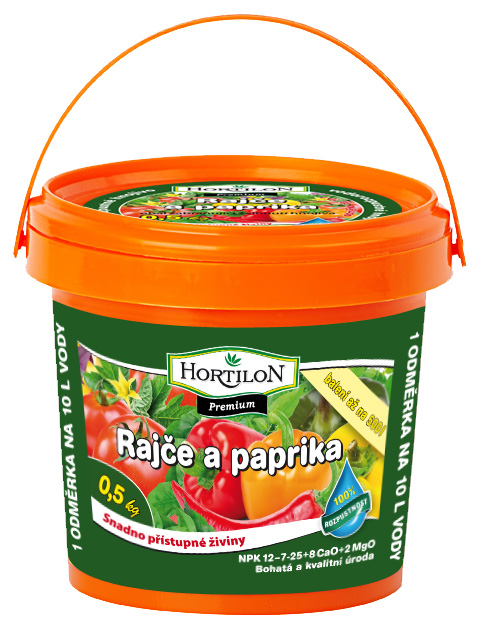
Speciální tipy pro hnojení rajčat:
- Vápník proti hnilobě konců plodů: Rajčata jsou náchylná k hnilobě konců plodů, která je často způsobena nedostatkem vápníku. Preventivně můžete do půdy při výsadbě přidat vaječné skořápky nebo použít hnojivo s obsahem vápníku. V případě potřeby aplikujte listové hnojivo s vápníkem.
- Hořká sůl (síran hořečnatý): Nedostatek hořčíku se projevuje žloutnutím listů mezi žilkami. Aplikace hořké soli zálivkou nebo postřikem může rychle pomoci.
- Hnojení během kvetení a plodnosti: V této fázi je důležitý dostatek draslíku pro správný vývoj plodů. Použijte hnojivo s vyšším obsahem draslíku.
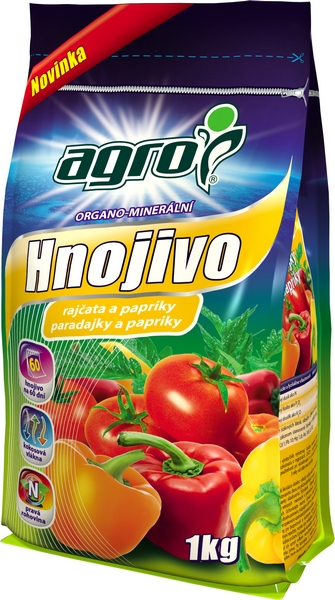
Speciální tipy pro hnojení paprik:
- Dusík v počáteční fázi růstu: Papriky potřebují v počáteční fázi růstu dostatek dusíku pro tvorbu silné rostliny.
- Fosfor pro kvetení a násadu plodů: V období kvetení a tvorby prvních plodů je důležitý fosfor.
- Draslík pro vybarvení a chuť plodů: V pozdější fázi růstu potřebují papriky dostatek draslíku pro správné vybarvení a vývin chuti.
- Pozor na přehnojení dusíkem: Nadbytek dusíku může vést k bujnému růstu listů na úkor kvetení a plodnosti.
Závěr: S pečlivým hnojením k bohaté úrodě
Správné hnojení rajčat a paprik je investicí do vaší budoucí úrody. Pochopením potřeb těchto náročných plodin a dodržováním základních principů hnojení zajistíte, že vaše rostliny budou zdravé, silné a obsypané chutnými plody. Nezapomeňte sledovat své rostliny a reagovat na jejich potřeby. S trochou péče a znalostí se můžete těšit na bohatou sklizeň, která vám přinese radost a uspokojení.
Další zdroje a informace:
Pro další informace o pěstování rajčat a paprik a hnojení doporučujeme konzultovat odbornou literaturu, zahradnické poradny nebo specializované webové stránky.